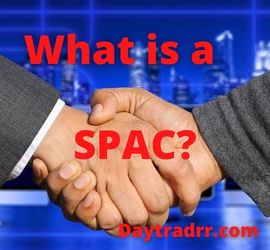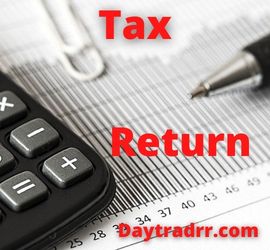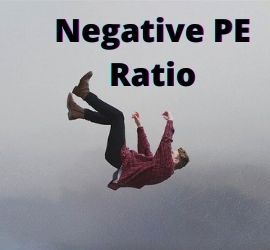What Is a SPAC and What is a SPAC Stock?
 A SPAC or special purpose acquisition company is a publicly-traded, cash-rich company. Its sole purpose is to find a suitable private company and take it public through a merger or acquisition. As a result, the private company can be publicly traded but avoids much of the initial public offering (IPO) hassle and expense. A SPAC stock refers to the common shares of a SPAC shell company traded before a merger takes place.
A SPAC or special purpose acquisition company is a publicly-traded, cash-rich company. Its sole purpose is to find a suitable private company and take it public through a merger or acquisition. As a result, the private company can be publicly traded but avoids much of the initial public offering (IPO) hassle and expense. A SPAC stock refers to the common shares of a SPAC shell company traded before a merger takes place.
A special purpose acquisition company (SPAC) has no other commercial operations. It is founded for the purpose of raising cash through an initial public offering (IPO) and is devoted to either acquiring or merging with another firm. SPACs, are often known as blank check firms. They have existed for decades, but their popularity has skyrocketed in recent years.
In 2020, 247 SPACs were launched with $80 billion invested. The first quarter of 2021 saw 295 newly constituted SPACs raise a record $96 billion. By comparison, just two SPACs were introduced to the market in 2010. SPACs account for more than half of all new publicly traded firms in the United States in 2020. (Source: hbr.org)
How a SPAC Works
SPACs are often founded by investors or sponsors with expertise in a specific industry or business sector. This assists them in pursuing opportunities in that industry or business sector. The founders of a SPAC may have at least one acquisition target in mind when forming the SPAC. However, they do not specify that target in order to avoid significant disclosures during the IPO process. Typically, IPO investors know nothing about the company in which they would ultimately be investing.
Before offering shares to the general public, SPACs seek underwriters and institutional investors. The funds raised by SPACs in an IPO are held in an interest-bearing trust account. These funds cannot be disbursed unless an acquisition is completed. Or, unless the money is returned to investors if the SPAC is liquidated. A SPAC typically has two years to execute a transaction or risk being liquidated. In some situations, a portion of the trust’s interest can be used to fund the SPAC’s operations. A SPAC is typically listed on one of the main stock markets following an acquisition.
What is a SPAC Stock?
Once formed, a SPAC is registered with the SEC and is a publicly-traded company. As a result, the general public can buy SPAC stock common shares in the shell company before the merger or acquisition takes place. If you invest in a SPAC at the IPO stage, you are relying on the management team that founded the SPAC. This group is known as the sponsors. The SPAC shell company then seeks to acquire or merge with an operational company. Once a target company is successfully acquired, the entity is known as the initial business combination. A SPAC may name a specific industry or business in its IPO prospectus that it will pursue when it tries to merge with an operating company. However, it is not required to pursue a target in the identified area.
Once the SPAC has identified an initial business combination opportunity, its management negotiates with the operating company and, if approved by SPAC shareholders (if a shareholder vote is required), executes the business combination. This transaction is often structured as a reverse merger in which the operating company merges with and into the SPAC or a subsidiary of the SPAC. While there are various ways to structure the initial business combination, the combined company following the transaction is a publicly-traded company and carries on the target operating company’s business. (Source: sec.gov)
SPAC Stock Trading Price
SPACs are typically priced at a modest $10 per unit during the IPO phase. The SPAC IPO pricing, unlike a standard IPO of an operational firm, is not based on a valuation of an existing business. When the units, ordinary stock, and warrants begin trading, their market prices may fluctuate, and these variations may have minimal bearing on the SPAC’s overall economic success.
In the IPO phase, SPACs are typically priced at a nominal $10 per unit. Unlike a traditional IPO of an operating company, the SPAC IPO price is not based on a valuation of an existing business. When the units, common stock, and warrants begin trading, their market prices may fluctuate, and these fluctuations may bear little relationship to the ultimate economic success of the SPAC. (Source: ibid)
SPAC Stakeholders
SPACs have three main stakeholder groups. These are sponsors, investors, and targets. Each has a unique set of concerns, needs, and incentives.
Sponsors
The sponsors initiate the SPAC procedure. To cover operating expenditures, they invest risk capital in the form of nonrefundable payments to bankers, lawyers, and accountants. If the sponsors fail to form a partnership within two years, the SPAC must be disbanded and all monies returned to the original investors. Sponsors lose not just their risk capital, but also a large amount of their own time. However, if they are successful, they obtain sponsors’ shares in the combined firm, which can amount to as much as 20% of the stock raised from the original investors.
Investors
To date, institutional investors and highly specialized hedge funds make the vast bulk of SPAC investments. Original investors in a SPAC purchase shares before the target company is identified. Therefore, they must trust sponsors who are not required to limit their targets to the size, valuation, industry, or geographic criteria mentioned in their IPO documents.
Targets
SPAC targets tend to be start-up companies that have gone through the venture capital process. At this stage, companies typically consider several options. Options include pursuing a traditional IPO, conducting a direct IPO listing, selling the company to another company or a private equity firm, or raising additional capital, typically from private equity firms, hedge funds, or other institutional investors. SPACs can be a compelling alternative to these late-round picks. They are very configurable and can deal with a wide range of combination alternatives. Although targets are typically a single private firm, sponsors might use the framework to group together many targets. SPACs can target companies that are already public in other countries. The merger can then allow the target company to be publicly traded in the United States. Also, numerous SPACs can merge and combine to take one company public.
Advantages of SPACs
SPACs provide significant benefits to companies that intend to go public.
- Time – a firm can go public through the SPAC method in a matter of months, whereas the traditional IPO process might take anywhere from six months to more than a year. The rising popularity of SPACs in 2020 may be attributable in part to their shorter time frame for going public. many companies can elect to skip traditional IPOs due to market volatility and uncertainty caused by the global pandemic.
- Valuation – the target company’s owners may be able to negotiate a higher price when selling to a SPAC because the latter has a limited time window for closing a sale. Furthermore, being purchased by or merged with a SPAC sponsored by famous financiers and business leaders can provide experienced management and increased market visibility to the target company.
SPACs offer target companies specific advantages over other forms of funding and liquidity. Compared with traditional IPOs, SPACs often provide higher valuations, less dilution, greater speed to capital, more certainty and transparency, lower fees, and fewer regulatory demands. (Source: hbr.org)
SPACs Make a Comeback
SPACs were not effectively regulated when they first appeared in the 1980s. As a result, they were plagued with penny-stock fraud, costing investors more than $2 billion per year by the early 1990s. Congress stepped in to provide much-needed regulation. For example, requiring that the funds of blank-check IPOs be held in regulated escrow accounts and not used until the mergers were completed. Blank-check corporations were rebranded as SPACs once a new regulatory framework was put in place.
SPACs have grown in popularity in recent years. However, new accounting rules announced by the Securities and Exchange Commission in April 2021 prompted new SPAC filings to fall in the second quarter from record levels in the first quarter of 2021. SPAC IPOs raised $13.6 billion in 2019, more than quadrupling the $3.2 billion raised in 2016. However, SPACs truly took off in 2020 and 2021. As much as $96 billion has been raised from 295 SPAC IPOs in just the first quarter of 2021. This exceeds the previous high of $80 billion raised from 247 SPACs for the entire year of 2020.
SPACs drew big-name underwriters like Goldman Sachs, Credit Suisse, and Deutsche Bank including retired or semi-retired senior executives. Furthermore, many celebrities, including artists and professional athletes, became engaged with SPACs. As a result, the SEC issued an “Investor Alert” in March 2021. It cautions investors not to make SPAC investment decisions purely based on celebrity involvement.
Examples of High-Profile SPAC Deals
There are many well-known companies that have become publicly traded after merging with a SPAC:
- DraftKings – a digital sports entertainment and gaming company
- Virgin Galactic – an aerospace and space travel company
- QuantumScape – an energy storage innovator
- Opendoor Technologies – a real estate platform
Richard Branson’s Virgin Galactic was involved in one of the most high-profile recent deals involving special purpose acquisition companies. Chamath Palihapitiya’s SPAC Social Capital Hedosophia Holdings, a venture capital firm, purchased a 49 percent interest in Virgin Galactic for $800 million before listing the company in 2019.
Bill Ackman, the founder of Pershing Square Capital Management, sponsored his own SPAC, Pershing Square Tontine Holdings, in 2020. It was the largest-ever SPAC, raising $4 billion in its July 22 offering. However, in August 2021, it was reported that Ackman intended to liquidate the SPAC.
Up Next: What Is a Tax Return?
 A tax return is a declaration to pertinent tax authorities calculating net income. The purpose is to determine if a further tax payment is necessary or if a refund can be expected.
A tax return is a declaration to pertinent tax authorities calculating net income. The purpose is to determine if a further tax payment is necessary or if a refund can be expected.
A tax return is a formal statement, often submitted under penalty of perjury that is filed with a governing tax authority. Typically, it records income, expenses, and other relevant tax information. Tax returns enable taxpayers to assess their tax liability, plan their tax payments, and receive refunds for overpayments. In most nations, an individual or business that has reportable income, such as wages, interest, dividends, capital gains, or other profits, must file an annual tax return.




